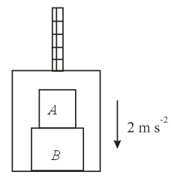Three blocks , and of masses and are arranged as shown in figure. All the surfaces are frictionless and string is inextensible. Pulleys and strings are light. A constant force is applied on block as shown. Part of the string connecting both pulleys is vertical and part of the strings connecting pulleys with blocks and are horizontal. Then
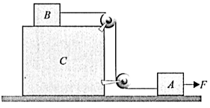


Important Questions on Newton's Laws of Motion (Without Friction)
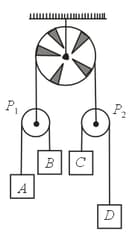
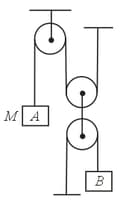
Three blocks , and having masses and , respectively, are arranged as shown in figure. The pulleys and are light and frictionless. All the blocks are resting on a horizontal floor and the pulleys are held such that strings remain just taut. At moment a force starts acting on pulley along vertically upward direction as shown in the figure. Take .
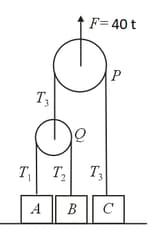
Regarding the times when the blocks lose contact with ground, which is correct?
In the system shown in figure, . The system is held at rest by thread . Now thread is burnt. Answer the following;
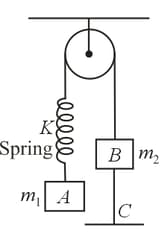
Before burning the thread, what are the tensions in spring and thread , respectively?
Two blocks of masses and are connected with a light spring of force constant and the whole system is kept on a frictionless horizontal surface. The masses are applied forces and as shown in figure. At any time, the blocks have same acceleration but in opposite directions. Now answer the following.

The value of is
A mass is suspended as shown in the figure. The system is in equilibrium. Assume pulleys to be massless. is the force constant of the spring.
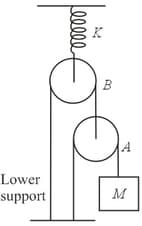
The extension produced in the spring is given by
The elevator shown in figure is descending with an acceleration of . The mass of the block, . Find the force (in Newton) exerted by block on block .
